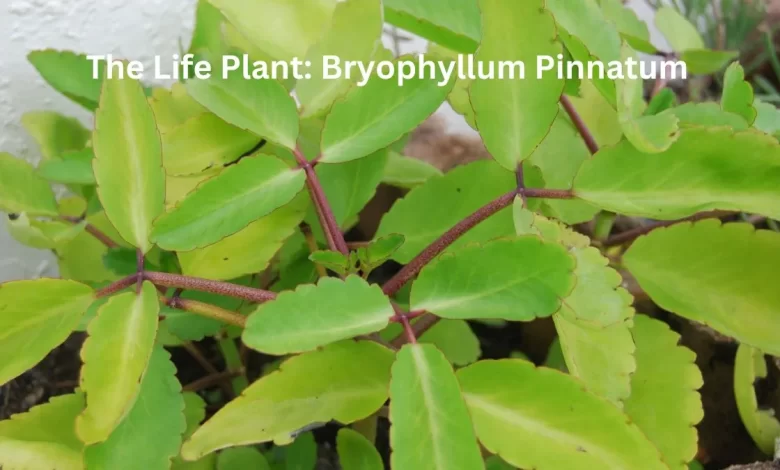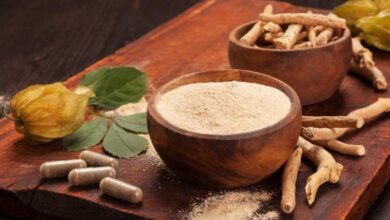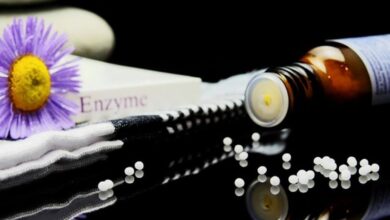The Life Plant: Health Benefits and Uses of Bryophyllum Pinnatum

The life plant, scientifically known as Bryophyllum pinnatum, is a fascinating succulent herb that has been used for centuries in traditional medicine across Africa, India, China, and beyond. With its unique ability to grow new plants from leaf cuttings, it is easy to cultivate and has become globally widespread. But more importantly, every part of this plant, from its leaves to roots, contains beneficial medicinal compounds that make it a versatile treatment for a variety of ailments.
This guide provides a comprehensive overview of the identified health benefits, medicinal usages, therapeutic applications, and safety considerations for the life plant. We will explore its background as a traditional remedy, scientific research on its bioactive compounds, ways to prepare remedies from it, specific treatments it provides, and potential side effects or precautions needed with its use. Additionally, we assess its effectiveness compared to conventional drugs, how to cultivate it yourself, and the future of life plant medicine. By the end, you will have extensive knowledge of this multi-purpose natural healing plant.
Table of Contents
Identifying the Life Plant (Bryophyllum pinnatum)
The life plant has acquired many common names across different cultures, including air plant, miracle leaf, resurrection plant, leaf of life, and Cathedral Bells. Its formal botanical name is Bryophyllum pinnatum, identifying it in the Crassulaceae family of succulents. It is a perennial plant native to Madagascar that can grow up to 1-2 meters tall.
The fleshy leaves are 5-25 cm long, sometimes with scalloped or crenelated edges. Tiny bell-like flowers emerge from pendulous panicles, ranging from greenish-yellow to pinkish-red hues. The fruit manifests as papery pods containing small seeds. The plant thrives in tropical climates and requires well-drained soil. It propagates easily from leaves, stem cuttings, or seeds. Now let’s explore its extensive medicinal history.
Also Read: The Versatile Gray Rattlebox: A Plant with Many Uses
Traditional and Medicinal Uses
For centuries, indigenous populations have utilized Bryophyllum pinnatum therapeutically. Historical records date back its medicinal usage to ancient Ayurvedic traditions in India. The juice from its leaves has treated ailments from fever to urinary disorders. In traditional Chinese medicine, the plant tackles conditions like dysentery, jaundice, and hypertension.
Across Africa, healers have used the life plant for respiratory issues, kidney problems, and as an anti-inflammatory. Preparations range from poultices to teas, with concentrations and combinations customized to the treatment needed. Some specific traditional uses include:
1. Kidney stones – Leaf decoctions taken regularly help dissolve and eliminate stones.
2. Urinary/bladder disorders – Juice and decoctions address infections, incontinence, dysuria.
3. Hypertension – Compounds relieve tension in blood vessels to reduce blood pressure.
4. Inflammation – Poultices applied externally alleviate swelling and joint pain.
5. Menstrual issues – Taken daily, it regulates periods and alleviates cramping.
The wealth of anecdotal evidence and ethnobotanical knowledge provide a meaningful foundation for the modern scientific study of life plant benefits.
Also Read: The Amazing Health Benefits of Tulsi/Holy Basil, the Queen of Herbs
Scientifically-Proven Health Benefits
In recent decades, scientists have been able to isolate specific compounds in Bryophyllum pinnatum and understand the mechanisms behind its medicinal actions. Through in vitro, animal, and human trials, numerous health benefits have been confirmed:
1. Antimicrobial effects: Research shows the plant has antibacterial, antiviral, and antifungal properties effective against many pathogens. The bufadienolides compound fights infections.
2. Pain relief: With anti-inflammatory and analgesic properties, the plant alleviates pain related to headaches, toothaches, arthritis, burns, and wounds.
3. Antihistamine effects: Compounds like bryophyllin A and B suppress allergic reactions and reduce conditions like asthma, hives, and anaphylaxis.
4. Liver protection: It shields the liver from toxins and pathogens. Animal studies show it restores liver health from induced hepatitis damage.
5. Digestive aid: Antimicrobial actions combat infections causing diarrhea and dysentery. It also alleviates constipation.
These scientifically validated effects prove the broad therapeutic potential of the life plant. Next, we will outline how to properly prepare and administer remedies from this versatile herb.
Also Read: Marula Fruit Magic: Boost Your Health Naturally
Preparing and Administering Life Plant Remedies
To harness the healing powers of Bryophyllum pinnatum, the leaves, stems, flowers, and roots can all be utilized in different forms:
1. Leaves – The succulent leaves offer the broadest medicinal applications. They can be:
– Juiced fresh and ingesting for internal benefits
– Dried and brewed into tea
– Crushed into topical poultices
– Powdered and added to skincare or haircare regimes
2. Stems – The stems produce an analgesic and anti-inflammatory juice.
3. Flowers – Each flower produces only a small amount of nectar, but this can be collected and used.
5. Roots – The roots are dried and powdered to create medicinal formulations.
For internal preparations, recommended adult dosages are around 5-10 ml taken twice daily. Externally, poultices are applied to affected skin or painful areas. These preparations require minimal processing while retaining the natural potency. Standardized extracts are also now available in capsule form for convenience.
Also Read: 10 Carao Fruit Facts That Will Blow Your Mind
Specific Healing Properties and Uses
Let’s explore some of the top therapeutic applications of the life plant backed by scientific evidence:
1. Respiratory conditions – The antihistamine effects make it beneficial for allergies, asthma, bronchitis, colds, coughs, and sinus congestion. It clears airways and reduces inflammation.
2. Skin afflictions – Antimicrobial properties help treat rashes, boils, infections, wounds, ulcers, and lesions. It also alleviates pain and swelling.
3. Women’s health issues – It regulates periods, decreases heavy menstrual flow, and relieves cramps. Life plant also treats leucorrhea.
4. Pain relief – Headaches, migraines, sore throats, toothaches, earaches, arthritis, and musculoskeletal pain all benefit from its anti-inflammatory and analgesic compounds.
5. Diabetes management – By improving liver and kidney health, it helps regulate blood sugar levels and reduce diabetic complications.
6. Heart health – Reducing hypertension protects cardiac health. It also strengthens blood vessels and improves circulation.
The life plant should be considered for these conditions before resorting quickly to pharmaceuticals that may carry more risks. However, certain precautions should still be kept in mind.
Also Read: Is Okra Water Healthy? Its Benefits and Uses
Risks, Precautions, and Warnings
When used appropriately, Bryophyllum pinnatum has a relatively safe toxicity profile, especially when compared to conventional drugs. However, a few cautions are warranted:
1. Dosage – Excessive amounts taken internally can cause adverse effects. Follow recommended guidelines.
2. Pregnancy – Safety during pregnancy is uncertain, so caution or avoidance is advised.
3. Surgery – Effects on blood pressure warrant stopping use at least 2 weeks before any scheduled surgery.
4. Children – Doses for minors have not been well studied and require oversight.
5. Drug interactions – May interfere with sedatives, antihypertensives, pain medications, and heart drugs.
Overall, with judicious use under the guidance of a healthcare practitioner versed in herbal medicine, the beneficial effects can safely be obtained. Individuals with hypotension or kidney disease should exercise particular caution. But in most cases, the life plant carries far fewer concerning side effects than prescription medications.
Also Read: How Jack Beans Can Improve Your Health
Comparison to Conventional Medicines
A benefit of natural remedies like the life plant is providing safer alternatives to commonly over-prescribed pharmaceutical drugs. For example, its anti-inflammatory effects compare favorably to NSAIDs like ibuprofen which can tax the liver and kidneys with long-term use. The plant also reduces high blood pressure without the sexual side effects sometimes caused by beta-blocker medications.
Additionally, the life plant is readily available and cost effective. Dried bulk leaves and powders can be purchased inexpensively. While patented, standardized extracts exist, these are still affordable compared to prescription drug costs, especially for the uninsured. For those seeking natural therapeutic options, Bryophyllum pinnatum should be strongly considered before resorting to pharmaceuticals that carry more potential harm. Of course, advice from healthcare professionals knowledgeable in botanical medicine is recommended.
Cultivation of Life Plant for Medicinal Use
The good news about the life plant is that it is relatively easy to cultivate yourself provided some key conditions are met:
1. Climate – It thrives best in subtropical and tropical environments with average temperatures above 60°F/15°C.
2. Soil – Well-draining, loamy soil amended with compost is ideal. Clay soil should be avoided.
3. Sun – Full sun is preferred, but partial shade is also acceptable.
4. Propagation – Can grow new plants from leaves, stem cuttings, division, or seeds. Mature leaves root quickest.
5. Containers – Can be grown indoors in pots. Use a fast-draining potting mix.
6. Harvesting – Leaves can be continually harvested. Stems and roots are best collected from older plants.
Storing dried leaves in airtight containers preserves medicinal potency. With ideal conditions, a backyard crop can provide an abundance of this medicinal plant.
Also Read: Borojo: The Exotic Fruit with Untapped Health Potential
The Future of Life Plant Medicine
As research continues to validate the traditional uses of Bryophyllum pinnatum, modern medicine is taking interest in this herb. Already, the compound bryophyllin is being studied for anti-cancer effects. More potent extracts are being developed and may eventually be formulated into standardized drugs. But the plant shows tremendous promise even in its natural form as a safer alternative or supplement to pharmaceutical options.
However, wild life plant populations will need protection from overharvesting as demand increases. Conservation cultivation will be crucial for sustaining this medicinal plant supply. With proper stewardship and scientific guidance, the life plant, true to its name, can remain a vital therapeutic remedy long into the future.
Conclusion
In conclusion, the long history of traditional medicinal usage of the life plant is substantiated by modern scientific research on its bioactive compounds and pharmacological actions. When used appropriately, Bryophyllum pinnatum can effectively and safely treat a wide range of conditions from hypertension to skin infections. It also offers a natural alternative to many conventional drugs laden with side effects. As research continues, the therapeutic potential of this unique succulent plant keeps expanding. With its ease of cultivation, the life plant promises a sustainable future as both a versatile medicinal herb and beautiful ornamental specimen.
To Know more visit the below sources:
- https://pubmed.ncbi.nlm.nih.gov/27220081/
- https://www.sciencedirect.com/topics/agricultural-and-biological-sciences/bryophyllum-pinnatum
- https://en.wikipedia.org/wiki/Kalanchoe_pinnata
- https://encyclopedia.pub/entry/37306
- https://en.wikipedia.org/wiki/Bryophyllum
Disclaimer:
This article is written for basic and general informational purposes only. The Statements contained here have not been evaluated by the FDA and neither the efficacy of these products has been confirmed by FDA-approved research. All information presented here is not meant as a substitute for or alternative to information from health care practitioners.
There’s no guarantee of specific results and the results can vary. Users must not view the content as medical advice in any way. Users are also required to ’NOT SELF-MEDICATE’ and always consult their health care professional before taking any medicines or undergoing any treatment. DivyaAyushCare and the author will not be responsible for any act or omission by the User arising from the User’s interpretation of the content.




